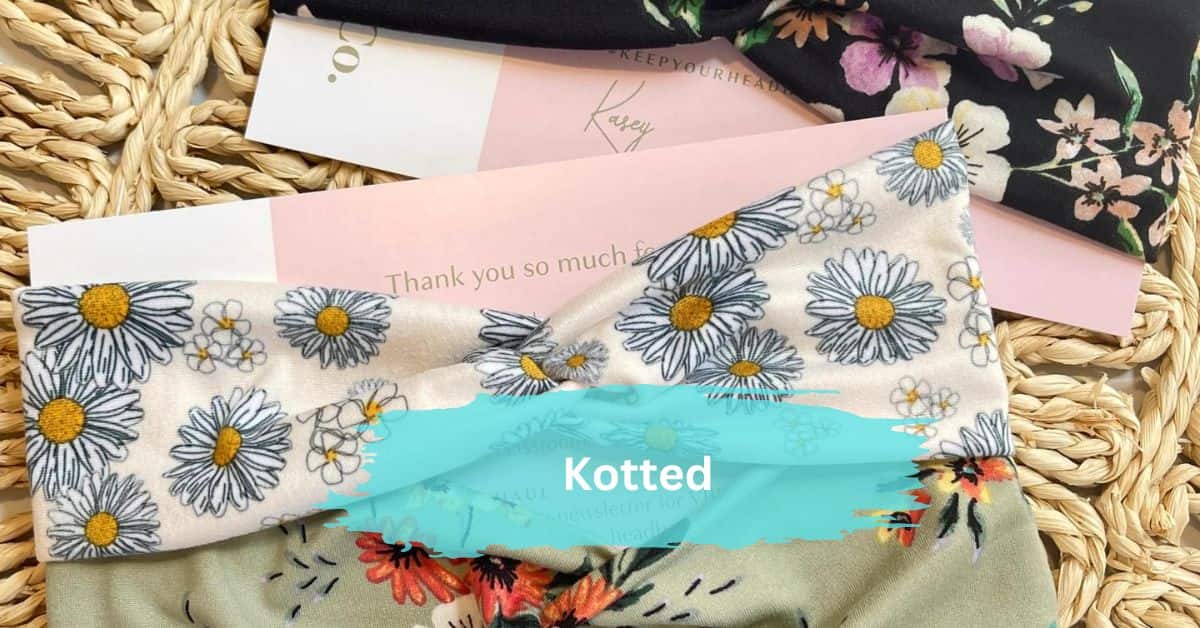Kotted – Exploring Its Origin, Uses, And Benefits!
Kotted, an ancient art form with deep historical roots, has seamlessly integrated into contemporary design, crafting, and cultural traditions. There are two types of kotted:
- Traditional Kotted
- Modern Kotted
This guide explores the details of kotted, looking at where it came from, how it has changed over time, what it’s used for, and why it’s beneficial.
What Is Kotted? Understand The Basics!
Kotted, also known as knotting or knotwork, is an artistic method where cords or ropes are woven together to make complex patterns. This craft demands careful attention to detail, precision, and a steady hand.
Throughout history, kotted has been used in various cultural practices, from decorating clothing to creating practical items like bags and baskets.
The Origin And Evolution Of Kotted – Get Into It!

Knotting techniques have been practiced for thousands of years across the globe. From the intricate Celtic knots of Europe’s ancient civilizations to the elaborate macramé of the Middle East, kotted has continually evolved through centuries of cultural exchange and innovation.
Its versatility has been applied in diverse fields such as textile production, maritime navigation, and even spiritual ceremonies, showcasing its enduring significance throughout human history.
What Are The Different Types Of Kotted? – Variation Into It!
Kotted encompasses various styles and techniques, from traditional forms passed down through generations to modern interpretations driven by innovation and experimentation.
- Traditional Kotted:
Traditional kotted styles often reflect the cultural heritage of their origins, with intricate patterns and symbolism deeply rooted in tradition. Examples include Celtic knotwork, Chinese knotting, and Native American knot designs.
- Modern Kotted Innovations:
In recent years, kotted has grown in popularity, fueled by contemporary design trends and interest in traditional crafts.
Modern kotted innovations blend traditional techniques with modern materials and aesthetics, creating unique and captivating artworks.
How Kotted Works? – Full Guide!

At its core, kotted involves manipulating cords or ropes through knots to form desired patterns. This ancient technique has been passed down through generations, with each culture developing unique variations and styles.
Depending on the complexity of the design, different knotting techniques, such as square knots, half-hitches, and lark’s head knots are employed, showcasing the versatility and creativity inherent in this art form.
Applications Of Kotted – Must Read All Of Them!
- Kotted in Traditional Crafts:
In many cultures, kotted is integral to traditional crafts such as textile weaving, basketry, and jewelry making.
These crafts not only showcase the beauty of kotted but also serve as a means of preserving cultural heritage and craftsmanship.
- Kotted in Contemporary Design
In contemporary design, kotted has been embraced for its versatility and aesthetic appeal. From interior décor and fashion accessories to architectural elements and furniture, kotted adds texture and intricacy to various design projects.
Kotted in Cultural Practices – touch with it!

Across different cultures, kotted holds a significant role in diverse cultural practices and ceremonies.
Whether adorning weddings and festivals with decorative embellishments or serving as symbolic elements in spiritual rituals, kotted is a potent expression of cultural identity and tradition.
Kotted holds cultural significance in numerous societies worldwide, each with its unique styles, symbolism, and traditions.
Benefits Of Incorporating Kotted – Explore Advantages!
- Aesthetic Appeal: The intricate patterns and textures created through kotted add visual interest and sophistication to any space or object, enhancing its overall beauty and charm.
- Therapeutic Effects: Engaging in kotted can be a meditative and calming practice, offering a sense of mindfulness and relaxation similar to other forms of creative expression, such as painting or sculpting.
- Cultural Preservation: By preserving and promoting traditional kotted techniques and designs, artisans play a vital role in safeguarding cultural heritage and fostering intercultural exchange and appreciation.
Techniques To Create Kotted – Learning Procedures!
- Basic Techniques: Basic kotted techniques such as square knots, half-hitches, and spiral knots provide a solid foundation for aspiring knot artists to build upon.
- Advanced Applications: In this techniques involve intricate patterns, multiple cords, and creative knot variations, allowing experienced practitioners to push the boundaries of their creativity and skill.
Frequently Asked Question:
1. Can anyone learn kotted, or is it only for experienced artists?
Yes, anyone can learn kotted! While it requires patience and practice, plenty of resources are available, from online tutorials to workshops, to help beginners get started.
2. Is kotted a dying art form, or is it experiencing a resurgence in popularity?
No, kotted is experiencing a resurgence in popularity! With the revival of interest in traditional crafts and the rise of the DIY movement, more people are discovering the beauty and versatility of kotted.
3. Can kotted be done with any type of rope or cord, or are specific materials required?
Yes, kotted can be done with a wide range of materials! While traditional kotted may use natural fibers like cotton or hemp, modern practitioners often experiment with synthetic materials like nylon or polyester for different effects.
4. Is kotted limited to specific cultures, or is it practiced worldwide?
No, kotted is practiced worldwide! While it may have originated in certain cultures, such as Celtic or Chinese, it has spread to many other regions and is embraced by people of diverse backgrounds and traditions.
Conclusion:
kotted is a timeless art form that bridges the past with the present, connecting cultures, generations, and creative minds through its intricate beauty and enduring appeal.
Whether as a form of self-expression, cultural preservation, or simply a source of inspiration and delight, kotted continues to captivate and inspire people worldwide.
Also Read:







